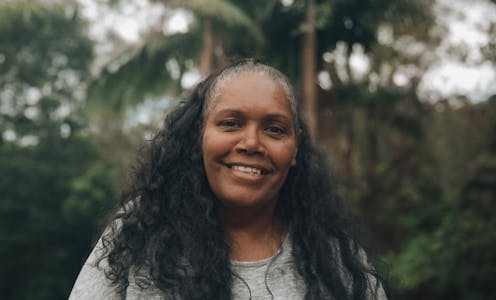Brenda Matthews was ripped from a loving family twice. But she was born too late to be officially recognised as Stolen Generations
- Written by Sandra Phillips, Associate Professor of Indigenous Australian Studies, School of Humanities and Communication Arts, Western Sydney University

The woman’s face is in profile, her eyes looking into the distance – or the past, or the future. This is a quiet woman, a thoughtful one; possibly one who also carries sadness in her soul. This woman’s face is natural, a face with features as familiar as my own – a strong brow, deep-set and dark eyes, and full unvarnished lips set with an appealing cupid’s bow. Her hair is swept up, the background is purple-blue – evocative of a beautiful night sky.
















